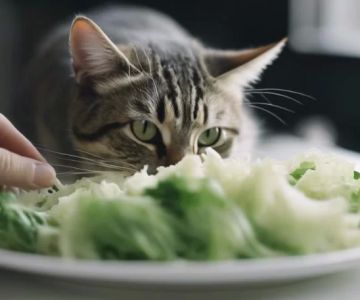- 1 - Can Cats Eat Brussel Sprouts
- 2 - Nutritional Benefits of Brussel Sprouts for Cats
- 3 - Potential Risks and Precautions
- 4 - How to Safely Introduce Brussel Sprouts to Your Cat
- 5 - Real Life Stories from Pet Owners
- 6 - Expert Tips and Resources from Hidden Brook Veterinary
1. Can Cats Eat Brussel Sprouts
Many cat owners wonder, “Can cats eat brussel sprouts?” The simple answer is yes, cats can eat brussel sprouts in moderation. Cats are obligate carnivores, meaning their diet is primarily meat-based, but occasional small servings of vegetables like brussel sprouts can provide extra fiber and nutrients. However, it is important to serve them properly and in limited quantities to avoid digestive upset.
Brussel sprouts are rich in vitamins and antioxidants that can offer benefits to feline health, but they should never replace a balanced, meat-focused diet. Moderation and preparation are key to ensuring your cat enjoys the benefits without experiencing side effects.
2. Nutritional Benefits of Brussel Sprouts for Cats
Brussel sprouts contain several nutrients that can be beneficial to cats, including:
1. Fiber: Helps support digestion and may prevent constipation when offered in small amounts.
2. Vitamins: Rich in vitamin C, K, and A, which support immune function, bone health, and vision.
3. Antioxidants: Compounds like kaempferol help combat oxidative stress and inflammation.
While these benefits are appealing, cats require these nutrients primarily from their natural diet. Vegetables like brussel sprouts act as a supplement rather than a primary source of nutrition.
3. Potential Risks and Precautions
Even though brussel sprouts are generally safe, there are potential risks:
1. Gas and Digestive Upset: Brussel sprouts are cruciferous vegetables that can cause bloating or flatulence in cats if consumed in excess.
2. Choking Hazard: Large pieces should always be chopped or steamed to reduce the risk of choking.
3. Allergic Reactions: Though rare, some cats may have sensitivities to certain vegetables, resulting in vomiting or diarrhea.
Being cautious and observing your cat’s reaction is crucial when introducing any new food, including brussel sprouts.
4. How to Safely Introduce Brussel Sprouts to Your Cat
Introducing brussel sprouts to your cat requires careful preparation and monitoring:
1. Cook Thoroughly: Steaming or boiling softens the sprouts, making them easier to digest and reducing gas.
2. Cut into Small Pieces: Prevents choking and ensures even portioning.
3. Start Slowly: Offer a small portion first and observe for any digestive discomfort.
4. Mix with Regular Food: Combine with their usual meals to encourage gradual acceptance and prevent nutrient imbalance.
5. Real Life Stories from Pet Owners
Many cat owners have shared experiences of feeding their pets brussel sprouts. One pet owner described how their indoor cat initially sniffed at steamed brussel sprouts but soon started enjoying them mixed with kibble, leading to improved digestion and occasional playful energy bursts. Another shared that introducing sprouts slowly prevented any digestive upset, proving that careful preparation is key.
These stories highlight the importance of moderation, observation, and patience when introducing new foods into a cat’s diet.
6. Expert Tips and Resources from Hidden Brook Veterinary
Hidden Brook Veterinary provides professional advice on safely including vegetables like brussel sprouts in a cat’s diet. Key tips include:
1. Consult Your Vet: Always check with a veterinarian before making dietary changes, especially if your cat has pre-existing conditions.
2. Observe Reactions: Monitor your cat’s behavior, stool, and appetite after introducing brussel sprouts.
3. Use as a Supplement: Remember that brussel sprouts should complement a balanced, meat-based diet rather than replace it.
With proper guidance from Hidden Brook Veterinary, cat owners can safely explore adding small amounts of brussel sprouts to their pet’s meals for added health benefits.











